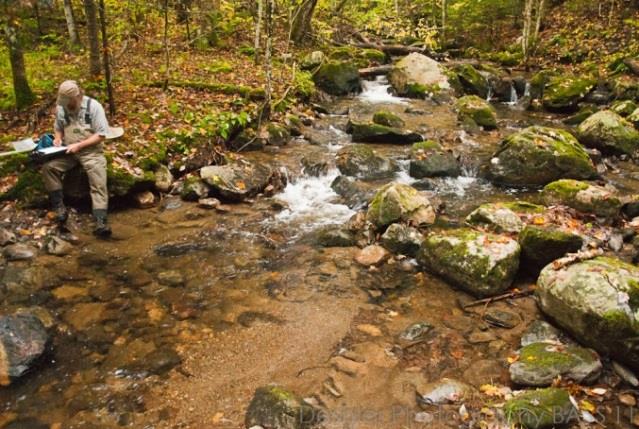Assessment of the Biological Condition of Vermont Streams
Dec. 15th 2014The Vermont Department of Environmental Conservation completed analysis of a five-year stream assessment and monitoring program. Standards and goals of the Clean Water Act were met in 70% of wadeable stream miles in Vermont. However, conditions have declined in some streams since the previous five-year survey. Categories ranging from poor to excellent are used to designate the biotic condition of the stream based on fish and macroinvertebrate communities. Water chemistry and physical characteristics were also measured to help explain the biological condition and identify potential environmental stressors. Samples were collected from 73 wadeable (1st-4th order) streams across the state. Site locations were sampled once during the five-year period of 2008-2012, all sites were visited between September 1 and October 15 of each year. Streams were classified as one of four types:
- small high gradient
- medium high gradient
- warm water moderate gradient
- low gradient "slow winder"
Macroinvertebrate and fish communities respond differently to environmental stressors, and as a result, the ratings differ between macroinvertebrate and fish community assessments of the same site. Independent assessments of stream biotic condition were used in this analysis, allowing for details of stream type and specific stressors to be more readily teased apart. Macroinvertebrate assessments indicate that 70% of streams are in very good to excellent condition, an increase from 60% in the previous five-year survey. However, not all streams improved in condition, rather, streams that were previously in good condition declined to fair and poor, not meeting Vermont standards for aquatic health. Stream type was an important factor in the shift, with many more small high gradient stream miles in fair and poor condition than previously. A major factor that contributed to low ratings of macroinvertebrate communities, especially in small streams was evidence of flood-scouring prior to sampling, specifically following Tropical Storm Irene. These streams are expected to recover over time, however, extreme flood events are predicted to increase in frequency; scouring may continue to cause a decrease in macroinvertebrate diversity among Vermont streams. Fish community condition remained similar to the 2006 survey, with some decline from excellent to very good, but also some improvements from good to very good. Environmental stressors that most directly impacted macroinvertebrate communities were nutrient enrichment and channel erosion. Acidification and thermal stress was linked to degradation of fish communities. Fish and macroinvertebrate communities in watersheds with the highest amounts of agricultural activity were more likely to have fair assessments. The overall results of the five-year survey indicate that a majority of wadeable streams in Vermont meet and often exceed Clean Water Act standards for both macroinvertebrate and fish communities. Nationally, only 20% of wadeable streams qualify for these standards, based on similar surveys done in 2008. However, a downward shift of stream condition did occur in many streams, suggesting the continued need for monitoring. Much of the decline in condition is attributed to damages from Tropical Storm Irene, primarily affecting streams that were already vulnerable. Recovery from the storm is expected, although more severe storms are anticipated in the future, which may result in further degradation of stream biological condition.
 ecoNEWS VT
ecoNEWS VT